Navigation
Install the app
How to install the app on iOS
Follow along with the video below to see how to install our site as a web app on your home screen.
Note: This feature may not be available in some browsers.
More options
Style variation
You are using an out of date browser. It may not display this or other websites correctly.
You should upgrade or use an alternative browser.
You should upgrade or use an alternative browser.
China Auto Thread
- Thread starter StraightEdge
- Start date
Yommie
SpeedLimited
- Oct 2, 2013
- 64,193
- 37,190
- Country of Origin

- Country of Residence

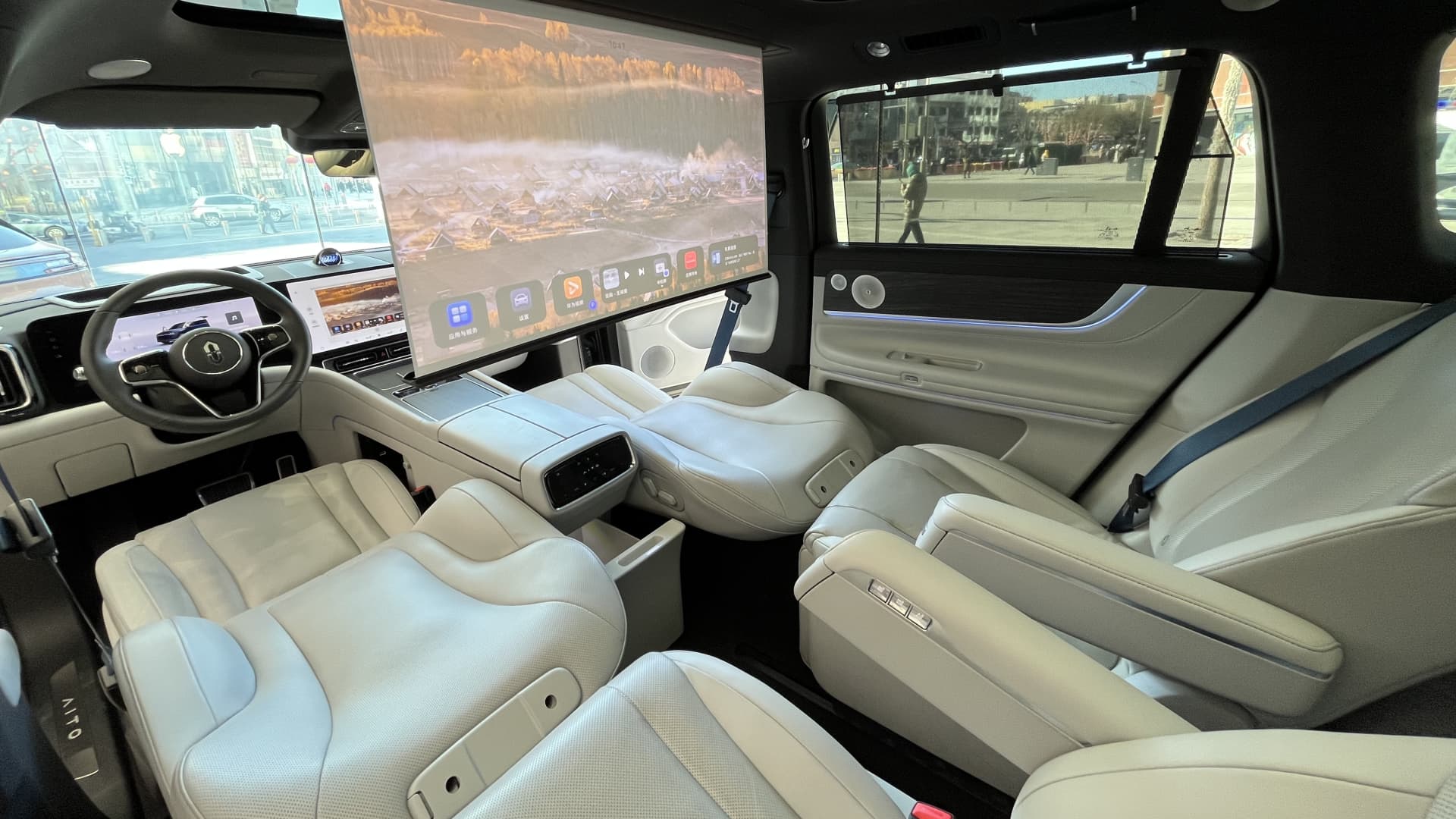
China’s EV players ramp up competition with Tesla using new tech
Hot competition in China's electric car market is pushing local automakers to sell vehicles with fancy tech that Tesla doesn't yet offer in the country.
China’s EV players ramp up competition with Tesla using new tech
PUBLISHED TUE, JAN 23 202411:12 PM ESTUPDATED WED, JAN 24 202411:10 PM EST
Evelyn Cheng@CHENGEVELYN
KEY POINTS
- As Chinese electric car companies reveal new models at a rapid pace, they’re piling in a slew of features: in-car projectors, refrigerators and driver-assist.
- “Electric vehicles in China becomes a consumer electronics [product]. It’s similar to the cellphone industry,” said Li Yi, chairman and CEO of Appotronics, a Shenzhen-based laser display company that claims to work with major automakers.
- He expects that demand for car tech will help his new autos segment generate “a few hundred million” yuan this year in revenue – the equivalent of $40 million to $100 million.
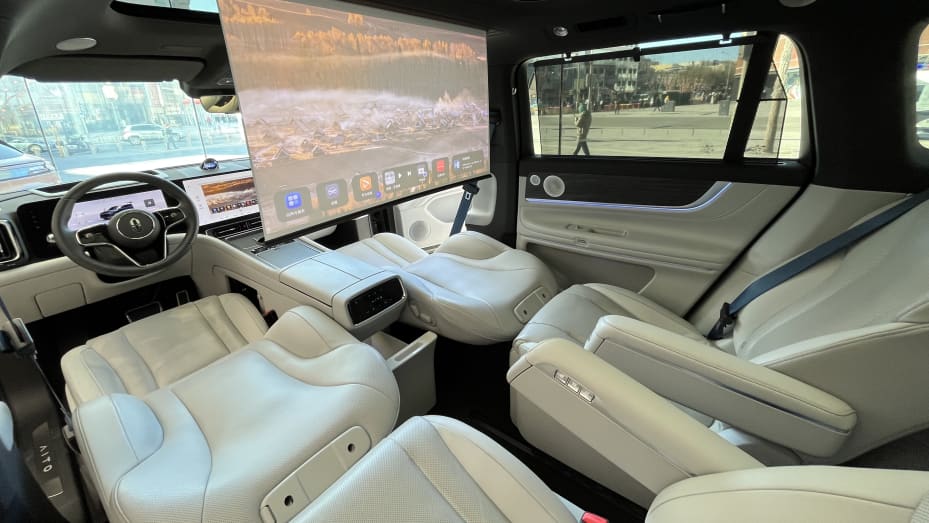
The front seats of the Aito M9 SUV can be adjusted to create reclining chairs for the second row. Passengers can watch a movie on the roll-down projector screen while storing drinks in a refrigerator compartment.
CNBC | Evelyn Cheng
BEIJING — Hot competition in China’s electric car market is pushing local automakers to sell vehicles with fancy tech that Tesla doesn’t yet offer in the country — and sometimes at lower prices.
No longer are companies competing primarily on driving range. Instead, as they reveal new models at a rapid pace, they’re piling on a slew of features: in-car projectors, refrigerators and driver-assist, to name a few.
Tesla’s cars don’t come with those accessories, and Elon Musk’s automaker only offers a limited version of its driver-assist tech in China right now.
“Electric vehicles in China becomes a consumer electronics [product]. It’s similar to the cellphone industry,” said Li Yi, chairman and CEO of Appotronics, a Shenzhen-based laser display company that claims to work with major automakers.
“In China, I think it’s more entertain[ment], more gadgets, people really want to buy something with the most advanced tech specs,” he said, adding that in Europe, people focus more on functionality.
Appotronics claims it made the 32-inch projection screen that unfurls inside the newly launched M9 SUV from Huawei’s Aito brand. Huawei did not immediately respond to a request for comment.
As of Jan. 1, Aito said orders for the M9 surpassed 30,000 vehicles, with deliveries set to begin in late February.
The six-seater car comes with a refrigerator, collapsible front seats, and instead of a physical dashboard, tech that projects the information so it appears overlaid on the road ahead. This tech, known as AR HUD, can also display navigation instructions.
The M9 SUV sells for about 470,000 yuan to 570,000 yuan ($66,320 to $80,430).
In comparison, Tesla’s Model Y, a mid-sized SUV, starts at 258,900 yuan while the Model S sedan starts at 698,900 yuan.
Among other well-known competitors, Li Auto’s L9 SUV starts at 429,900 yuan and comes with AR HUD, a refrigerator and driver-assist tech.
Xpeng’s G9 SUV, widely considered a leader in China for driver-assist tech on city streets, starts at 289,900 yuan.
That’s just a peek at the swath of cars and the available bells-and-whistles in China. More than 100 new EV models are due to launch in 2024 in China, according to HSBC.
Consumers’ interest in new car models has focused on in-vehicle tech features and driver-assist capabilities — “far more advanced” than prior electric cars or traditional gasoline-powered vehicles, said Yiming Wang, analyst at China Renaissance Securities.
Price and maximizing mileage are two other top considerations for consumers, Wang said.
A multi-million dollar business
Appotronics’ Li expects that demand for car tech will help his new business segment generate “a few hundred million” yuan this year in revenue – the equivalent of about $40 million to $100 million, he said. The Shanghai-listed company previously made about $300 million in overall revenue a year, Li said.When asked about Tesla, Li said he wasn’t authorized to disclose details but said people at the U.S. automaker “want something completely different than Chinese carmakers.”
He also noted that in Appotronics’ experience, Chinese customers are willing to pay a premium for car tech, while U.S. automakers are more focused on reducing costs.
That’s because electric car batteries and other parts aren’t made in the U.S., which means American companies are already paying a premium for core components of the electric car, Li said.
Chinese companies dominate the supply chain for electric car batteries.
In fact, the main reason why BYD has succeeded is because of its early work in batteries, where it can now reduce costs, pointed out Zhong Shi, an analyst with the China Automobile Dealers Association.
BYD surpassed Tesla by total car production in 2023, and sold more battery-only cars than the U.S. automaker did in the fourth quarter.
Traditional foreign auto giants like Volkswagen are struggle to adjust to the surge of electric cars in China, while domestic companies, including smartphone company Xiaomi and Geely-backed startup Zeekr, are rushing to release electric cars.
“I think the German system is coming from the mechanical, the bottom-up. [The] Chinese system is coming digital, top-down,” observed Omer Ganiyusufoglu, a member of German’s National Academy of Science and Engineering.
When designing a car, German engineers think about horsepower first, while Chinese engineers start with the cockpit design and then the interior, he said, citing a Chinese car engineer, when he spoke Monday at a Huawei event on “5G Advanced.”
China’s driver-assist push
Driver-assist has emerged in the last year as competitive feature for electric cars in China.Tesla’s version for helping with driving on highways — called Autopilot — is available in the country, but the company’s “Full Self Driving” (FSD) feature for city streets is not.
Chinese regulators are gradually allowing passenger cars to use more driver-assist features in cities, such as for smooth braking at traffic lights. Chinese authorities in November also announced a nationwide push for developing driver-assist and self-driving technologies via pilot programs.
However, it remains unclear to what extent consumers are willing to pay for such features.
“Even though customers, specially those in China, always indicate in surveys that they are willing to pay for general safety and navigation [advanced driver assistance system] features, their answers change when they are asked about specific ADAS features and their buying behavior tells are different story,” said Shay Natarajan, a partner at Mobility Impact Partners, a private equity fund that invests in transportation.
“There are over 20 unique ADAS features,” she said, noting blind spot warnings or surround camera view were the most popular items. “Note that FSD is not on top of the list of ADAS features customers are willing to pay for.”
Yommie
SpeedLimited
- Oct 2, 2013
- 64,193
- 37,190
- Country of Origin

- Country of Residence

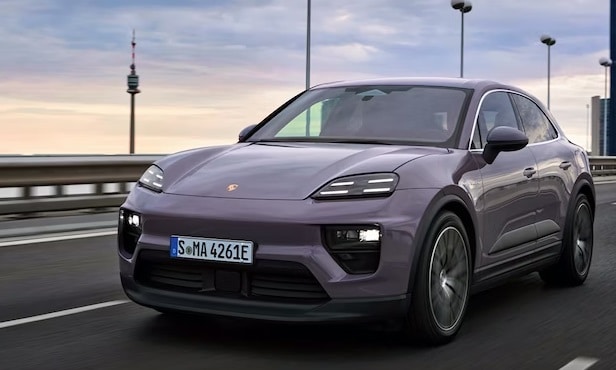
Porsche produces Macan EV with CATL battery
According to the report, CATL will supply batteries to Porsche's latest EV, Macan Electric.
 carnewschina.com
carnewschina.com
Porsche produces Macan EV with CATL battery
Reading Time: 2 minutes
Adrian Leung
January 26, 2024

Porsche revealed its first EV Taycan in 2019. After 5 years, Porsche has a second EV to its line-up, the Macan Electric. It is equipped with a 100 kWh battery pack (enabling a 21-minute charge from 10 percent to 80 percent). According to the report, this pack is supplied by CATL (Contemporary Amperex Technology Co. Ltd.), a leading Chinese battery manufacturer.This battery contributes to a WLTP city driving range exceeding 780 km. Built on the 800V high-voltage architecture PPE electric platform, the Macan EV supports both 400V and 800V charging configurations.
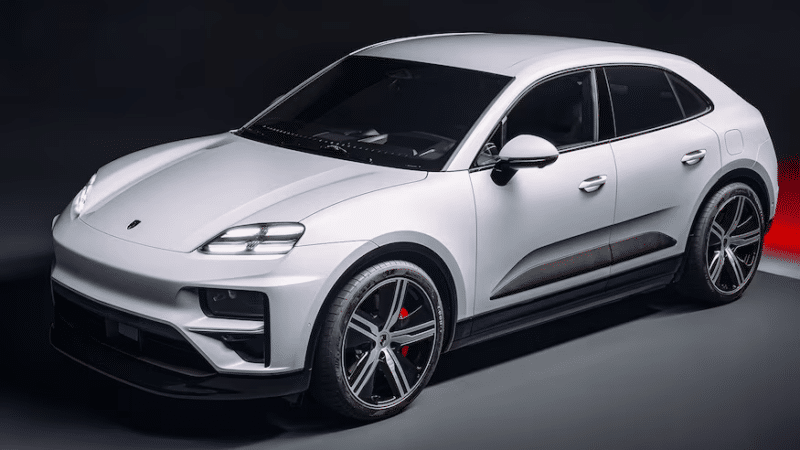
Volkswagen has integrated their ID car family with CATL NMC Lithium batteries. It only makes sense for Porsche to work with CATL considering the relationship between Porsche and Volkswagen. Specific details regarding the CATL battery variant used in the Macan Electric remain undisclosed. However, looking at CATL’s battery tech development, the following battery variants will likely be used. CATL has introduced notable battery variants like the Qilin Battery, launched on June 23, 2022, boasting a 13 percent power increase. Additionally, the Shenxing Battery, unveiled on August 16, 2023, is based on LFP chemistry.
CATL batteries dominate the industry. It commands a 37.4 percent market share during the January-November period. The 233.4 GWh battery capacity supplied by CATL showcases a 48.3 percent year-on-year growth.
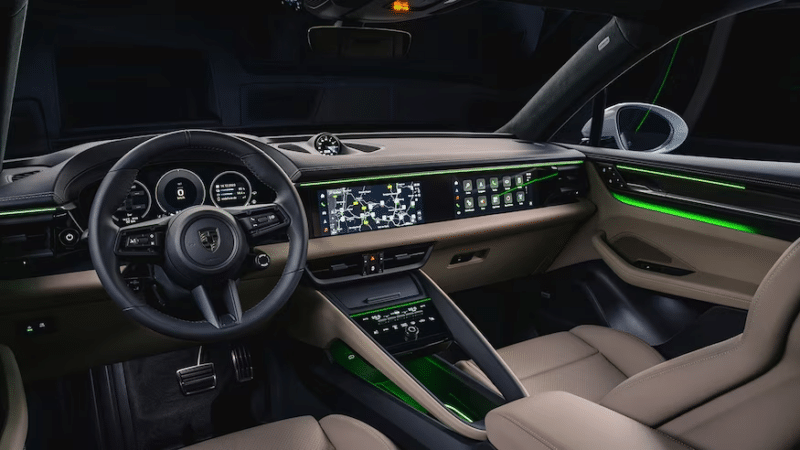
Porsche unveiled the Macan Electric in Singapore recently. There are two variants. Their key specifications and starting prices as follows:
- Macan 4 Electric:
- 300 kW combined power
- 650 Nm max torque
- 0 to 100 km/h in 5.2 seconds
- City WLTP range up to 784 km
- From 78,800 USD
- Macan Turbo Electric:
- 470 kW combined power
- 1,130 Nm max torque
- 0 to 100 km/h in 3.3 seconds
- City WLTP range up to 765 km
- From 105,300 USD
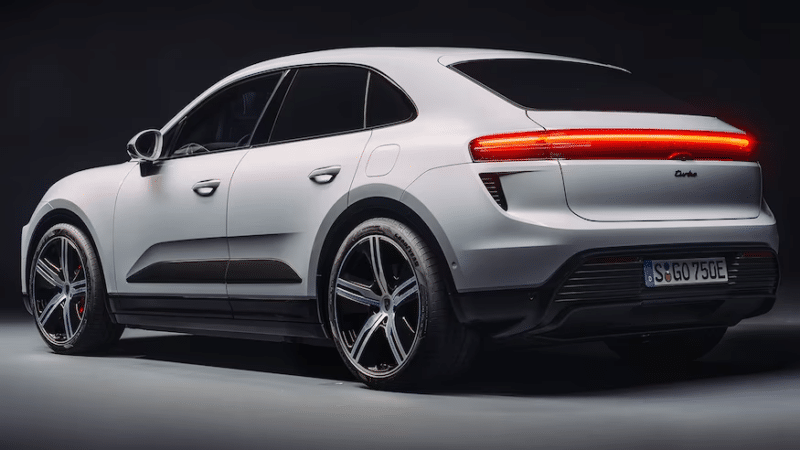
Chinese customers can reserve the Macan Electric by paying a refundable 9,110 Yuan (1,285 USD). The official sales are set to commence during Beijing Auto Show 2024 on April 25, with the Chinese retail prices to be disclosed at that time. Beijing Auto Show 2024 is scheduled from April 25 to May 4, marking the return of the event after a four-year break.
Source: Porsche, Mobile China
Yommie
SpeedLimited
- Oct 2, 2013
- 64,193
- 37,190
- Country of Origin

- Country of Residence


Volkswagen unveils ambitious 2030 goals in China, focused on electrification and innovation
Volkswagen has big plans through 2030 in China.
 carnewschina.com
carnewschina.com
Volkswagen unveils ambitious 2030 goals in China, focused on electrification and innovation
Reading Time: 2 minutes
Naveed Rastegar
January 26, 2024
0
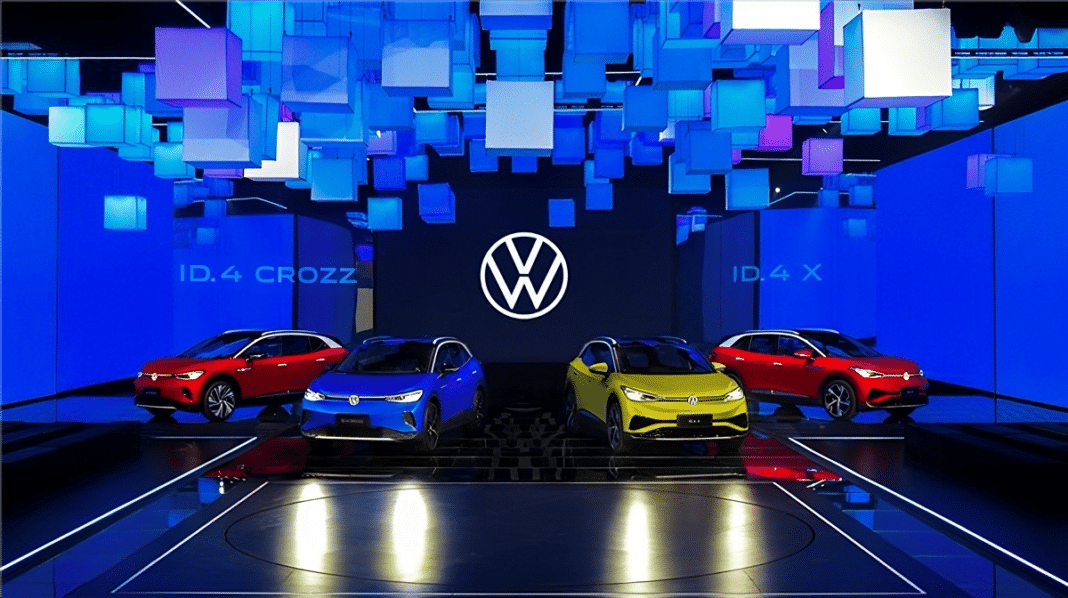
News like this to your inbox or phone?
Weekly summary to your inbox
I want this
Never miss and important news
Get Instant notification once the news is published.
Follow Us
In a recent media communication conference held on January 25th, Volkswagen Group China (Which includes its partnerships with SAIC and FAW) officially unveiled its ambitious goals for 2030. Despite facing challenges in the domestic market environment in 2023, the automaker reported a 1.6% year-on-year growth, delivering 3.236 million vehicles in China and placing second best in sales.
EV sales have been Volkswagen’s Achilles heel. In 2023, VW sold around 155,500 ID-series electric cars. For comparison, Chinese GAC Aion sold over 480,000 cars, Tesla sold over 600,000 vehicles in China, Li Auto delivered over 370,000, and even Nio (a high-end EV brand) sold nearly 160,000 units. In stark contrast, Volkswagen ID.7 sales in November received only 300 orders 72 hours after the pre-sales started.
 Volkswagen ID.7
Volkswagen ID.7Looking ahead to 2024, Volkswagen Group says it is committed to accelerating its transformation and maintaining its leadership in the era of intelligent connected vehicles. As part of its strategy, Volkswagen plans to offer 30 locally-produced fuel and hybrid models by 2027, intensifying its push towards electric vehicles. By 2030, the company aims to provide a minimum of 30 pure electric models in the Chinese market. The recently updated ID.3 and ID.4 are examples of its electric goals. Furthermore, in order to further bolster its efforts, Volkswagen Group is harnassing other Chinese manufacturer’s tech and plans to use Xpeng’s E/E architecture to produce two electric models for the Chinese market in 2026.
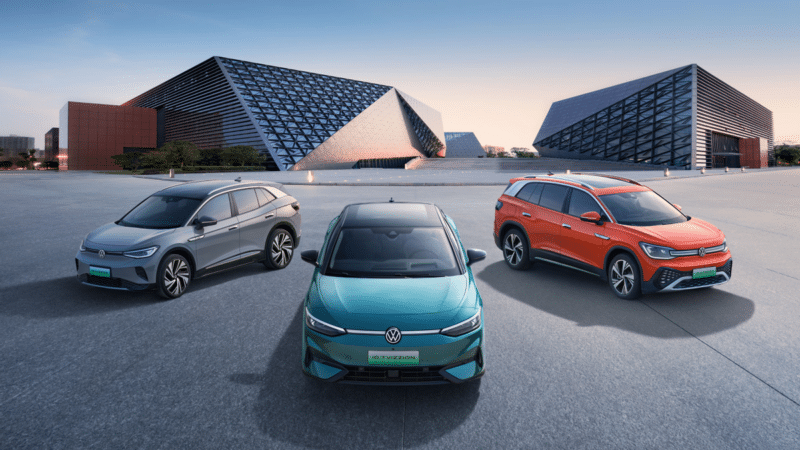
In addition to its electric ambitions, Volkswagen Group intends to strengthen its position in the internal combustion engine (ICE) market. The company plans to upgrade its major ICE products with advanced technologies in the coming years.
Volkswagen Group is set to integrate innovative technologies into its products, introducing driving assistance features, intelligent cockpits, new in-car navigation systems, and AI-powered assistants tailored for the Chinese market. This move aims to enhance the overall intelligence of their products.
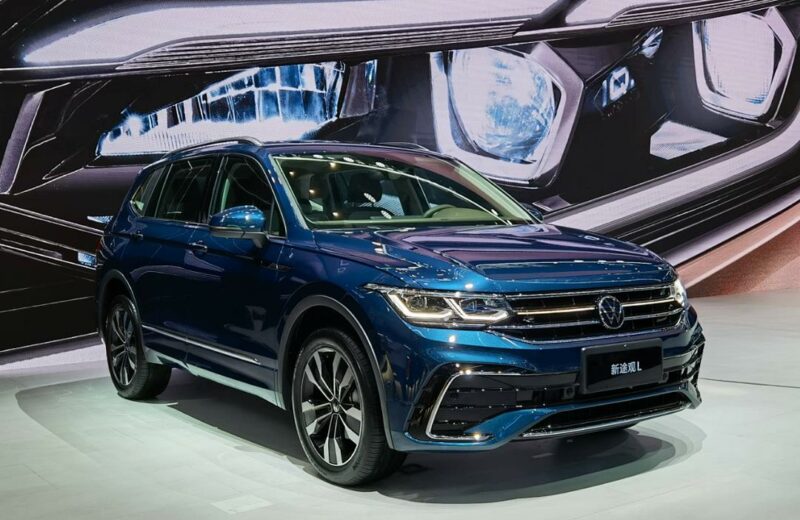
Volkswagen Group will continue to expand its lineup of ICE vehicles, gradually transitioning towards new energy sources by advancing hybrid technologies. Volkswagen’s strategy in China encompasses a comprehensive approach that includes both electrification and enhancement of traditional combustion engine products. The company’s commitment to innovation and adaptation to the evolving automotive landscape highlights its determination to play a leading role in the Chinese market’s future.
Yommie
SpeedLimited
- Oct 2, 2013
- 64,193
- 37,190
- Country of Origin

- Country of Residence

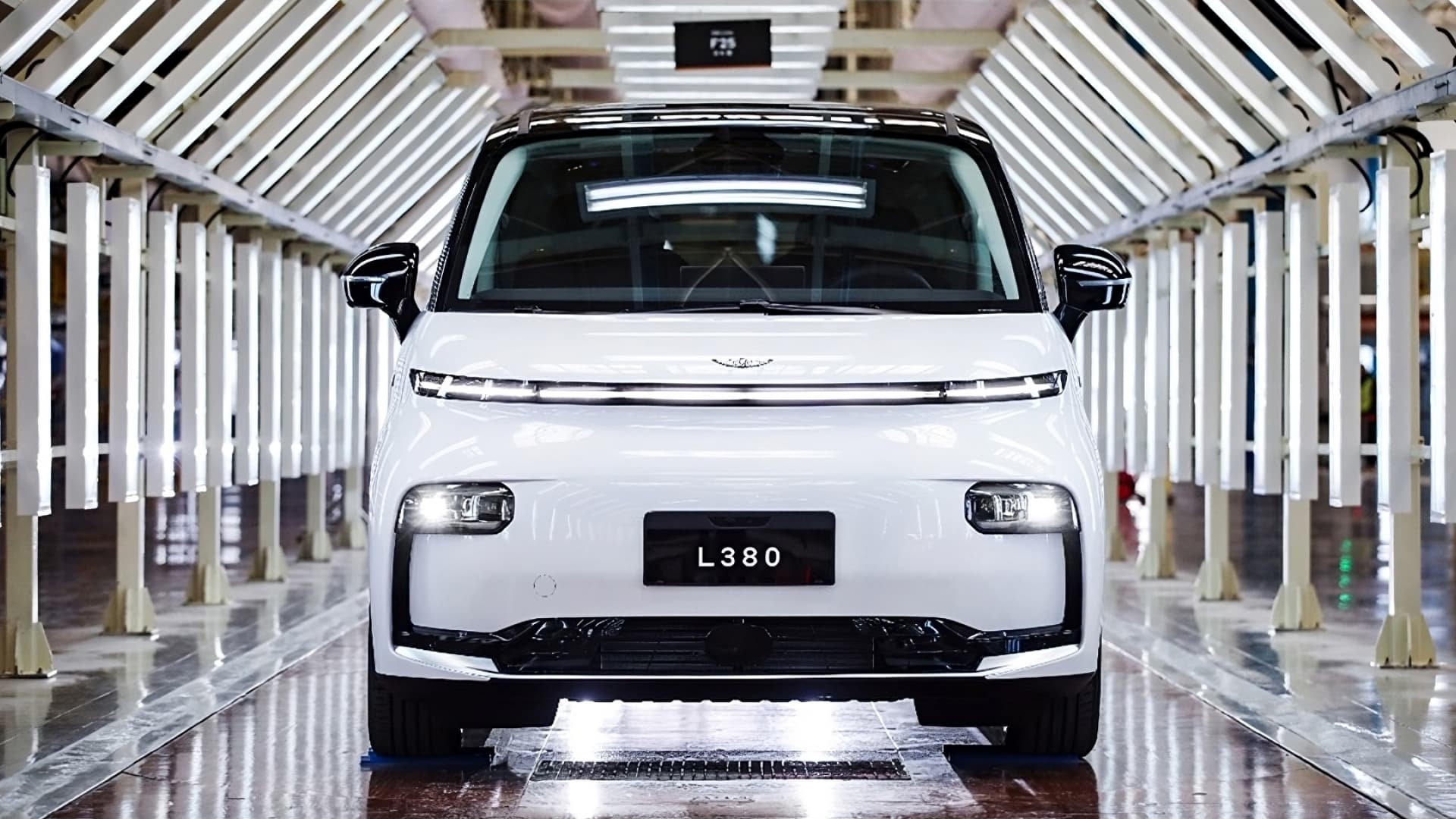
LEVC L380 minivan rolled off the assembly line in China
The LEVC L380 large electric MPV from Geely Group is ready for the international markets with 8 seats and 675 km range.
 carnewschina.com
carnewschina.com
LEVC L380 minivan rolled off the assembly line in China
Reading Time: 2 minutes
Denis Bobylev
January 26, 2024
0

News like this to your inbox or phone?
Weekly summary to your inbox
I want this
Never miss and important news
Get Instant notification once the news is published.
Follow Us
The LEVC 380 electric multi-purpose vehicle (MPV) from Geely Group started mass production in China. It is a full-size high-end minivan with up to eight seats inside, a 200-kW e-motor, and up to 675 km range. The L380 aims at international markets.
LEVC is the London Electric Vehicle Company, a successor of the well-known British London Taxi Company founded in 1919. The British cab maker was acquired by Geely Group in 2012 and focused on manufacturing BEVs and EREVs (extended-range electric vehicles). By December 2023, LEVC’s cars made up over 50% of all licensed taxis in London. The LEVC model line currently comprises a single vehicle called TX. Soon, the LEVC L380 minivan will join the ex-British brand line. Its mass production has begun in China.
LEVC L380 mass production
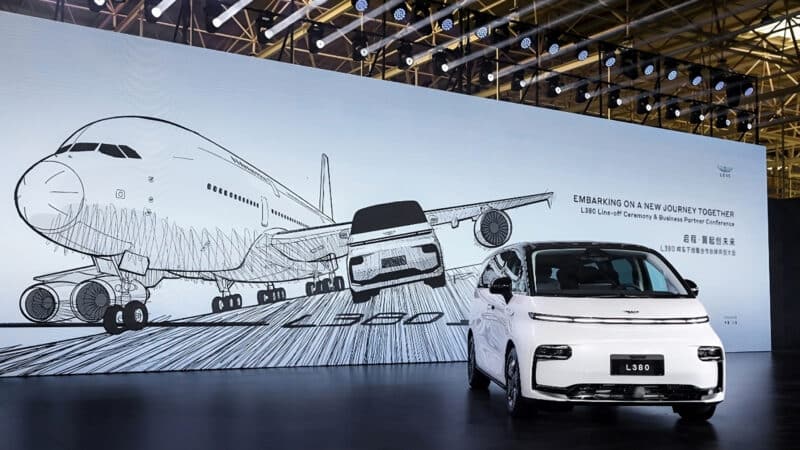
The mass production of the LEVC L380 has started in Zhejiang in the LEVC New Energy Automobile Co., Ltd plant. The same factory also manufactures the LEVC TX. During the official line-off ceremony, LEVC held a business partner conference. They have also displayed the first mass-produced LEVC L380 with a drawing of the Airbus A380 in the background. LEVC didn’t disclose any further information about the event.
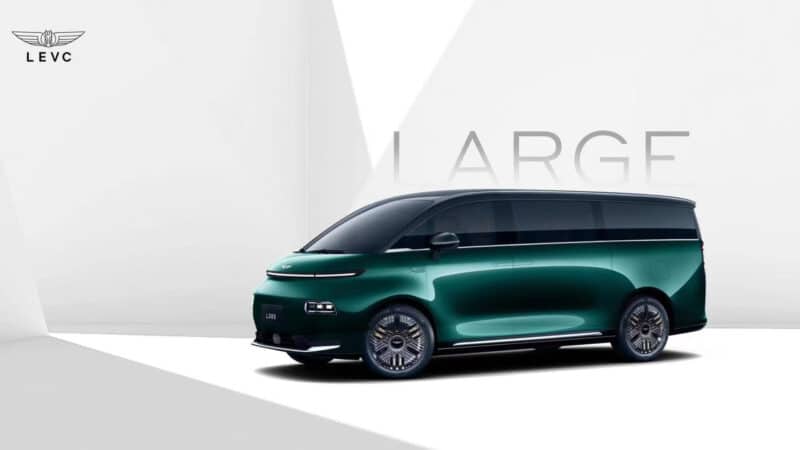

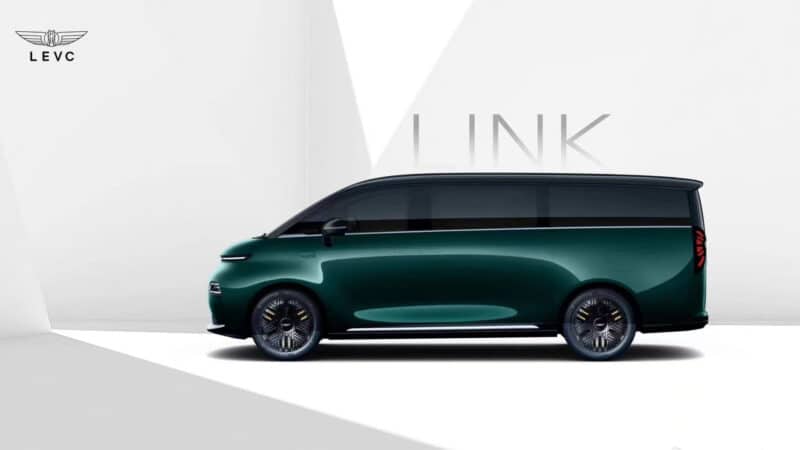
As we can see, the first mass-produced LEVC L380 has a steering wheel on the left side. So, this minivan won’t probably enter the UK market shortly. However, LEVC announced that their beast of an MPV is aimed at international markets. The first mass-produced LEVC L380 is finished in white. However, the brand representatives shared some official images of this minivan in green.
LEVC L380 details
The LEVC L380 is a large minivan based on SOA commercial vehicle architecture derived from Geely’s SEA platform. Its dimensions are 316/1998/1940 mm dimensions, with a wheelbase of 3185 mm. Inside, the L380 has up to 8 seats with a 2 + 2 + 2 + 2 layout.The LEVC L380 has two powertrain options:
- 200-kW electric motor, 170 km/h top speed, 100 kWh ternary NMC battery, 570 km range
- 200-kW electric motor, 170 km/h top speed, 116 kWh ternary NMC battery, 675 km range
Update
According to the LEVC official social media account, the L380 will enter the UK market in 2 years.Yommie
SpeedLimited
- Oct 2, 2013
- 64,193
- 37,190
- Country of Origin

- Country of Residence

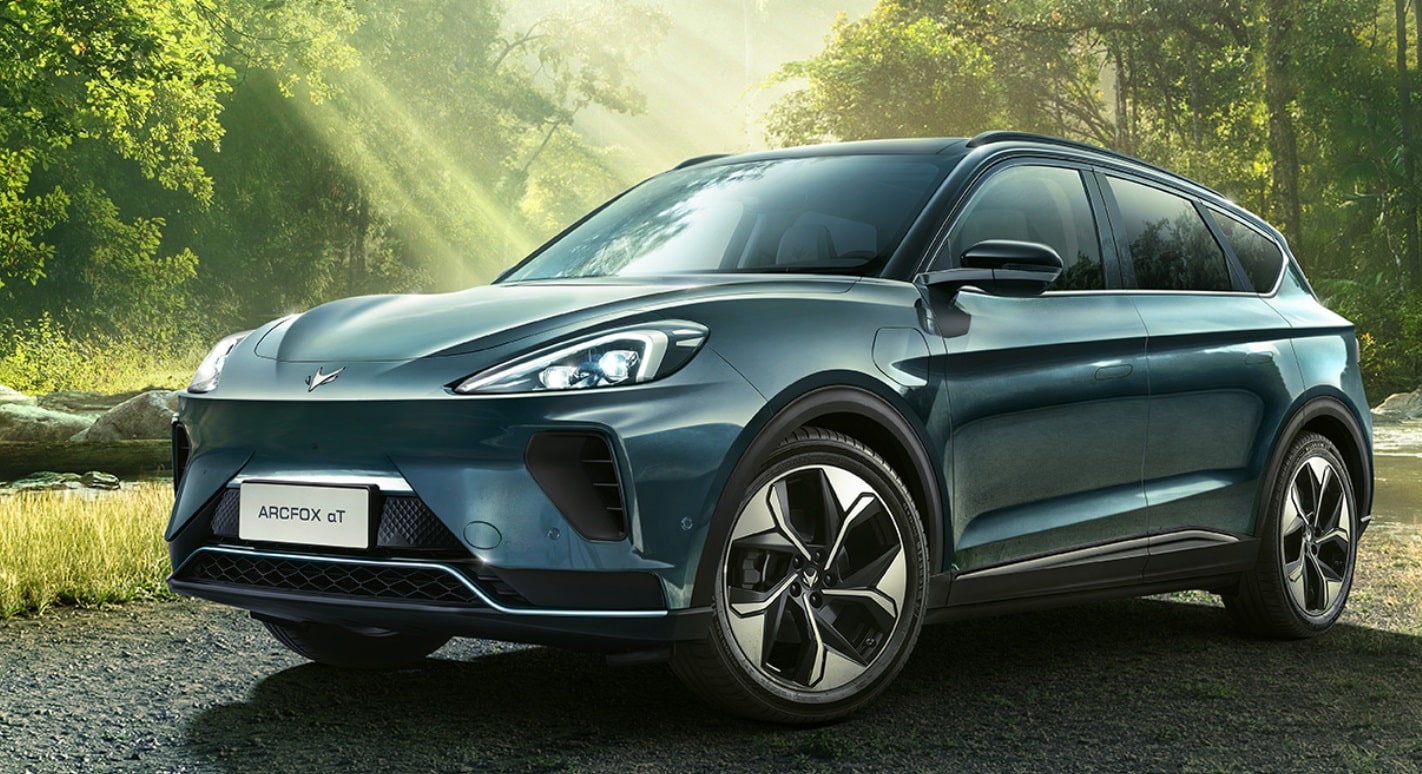
BAIC launched additional Arcfox Alpha S & Alpha T variants
Chinese-Canadian EV joint venture adds premium versions to their line-up
 carnewschina.com
carnewschina.com
BAIC launched additional Arcfox Alpha S & Alpha T variants
Reading Time: 2 minutes
Adrian Leung
January 25, 2024
0

News like this to your inbox or phone?
Weekly summary to your inbox
I want this
Never miss and important news
Get Instant notification once the news is published.
Follow Us
According to Arcfox, new variants to their Arcfox Alpha S sedan and Arcfox Alpha T SUV lines-ups has been launched. They are named Arcfox Alpha S Forest Pro 650E and Arcfox Alpha T SUV Forest Pro 610E. They are offered at 227,800 Yuan (32,100 USD) and 225,800 Yuan (31,800 USD), respectively. The upgrades include heated/massage front and rear seats, leather steering wheel, and heat pump air conditioning.
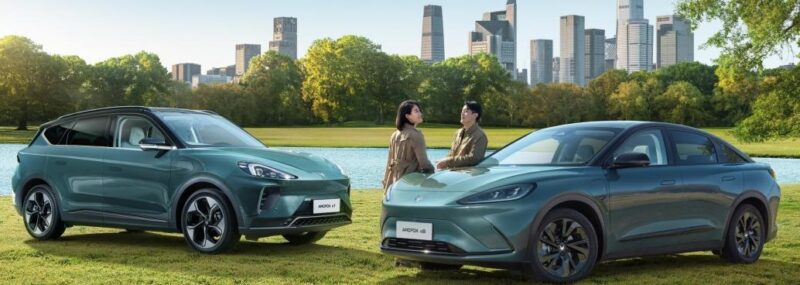
ArcFox, short for arctic-fox, is joint-venture between BAIC and Magna International (a Canadian auto parts manufacturer). Arcfox was founded back in 2018. Arcfox vehicles are built in China while some of the testing is performed in Canada by Magna. Currently, Arcfox vehicles are only sold domestically in China.
The ArcFox model line-up includes ArcFox Alpha S sedan, ArcFox Alpha T SUV and Kaola. They operate with Huawei’s HarmonyOS for autonomous driving. According to BAIC, last year Arcfox achieved a total annual sales of 30,016 new cars by December 2023. Right now Arcfox cars are using ternary NMC battery. In the future, Arcfox vehicles will be equipped with CATL’s Shenxing LFP battery capable of 4C charging.
ArcFox Alpha S & Alpha T new variants
ArcFox launched new variants for Alpha S and Alpha T models. They are offered within the 225,800 – 227,800 yuan (31,800 – 32,100 USD). For this cost, new variants offer some additional features.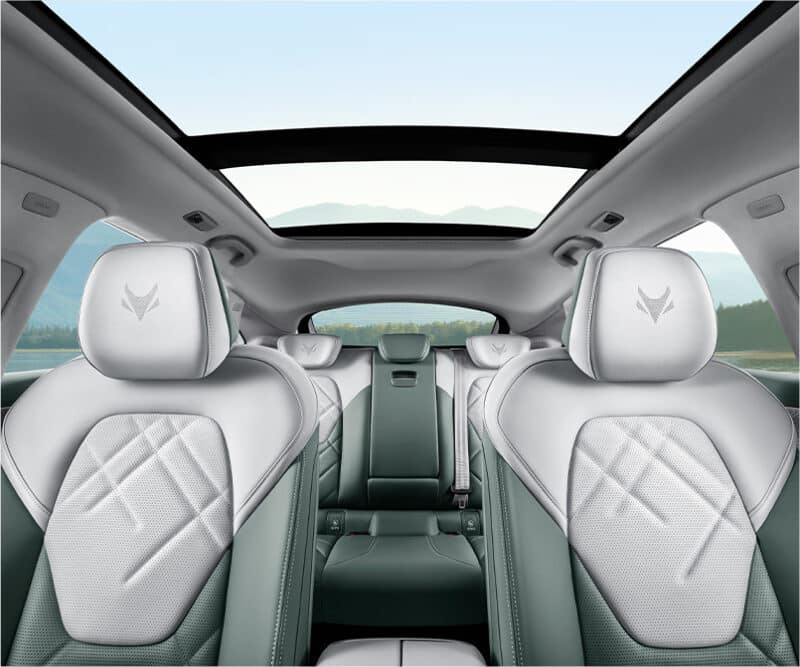
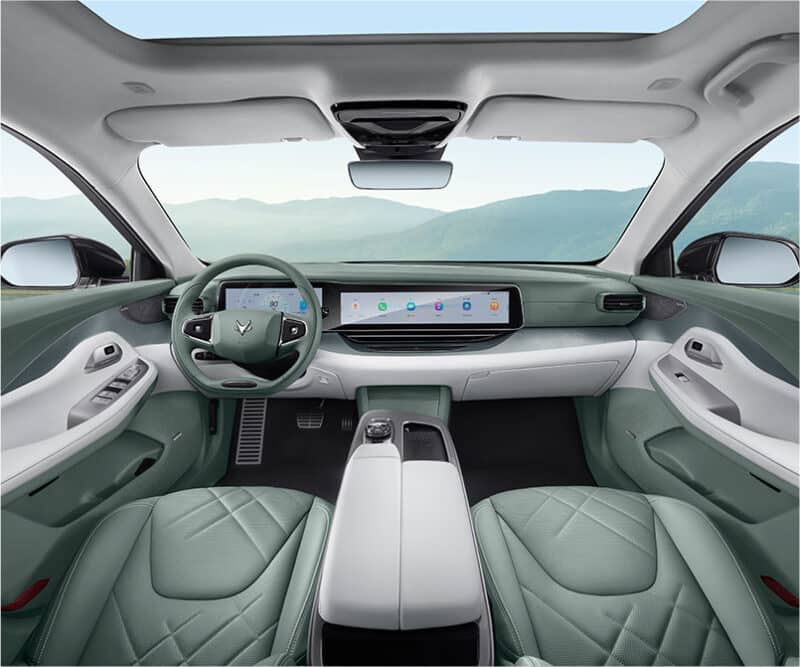
- Forest Edition Pro models are equipped with PM2.5+CN95 antibacterial filters.
- Achieves reduction of PM2.5 levels to 15 or below within 8 minutes.
- Interior components utilize low VOC and low-odor eco-friendly materials.

- Arcfox Alpha S Sedan Forest Pro 650E:
- Maximum power: 175 kW
- Peak torque: 360 Nm
- CLTC pure electric range: 650 km

- Arcfox Alpha T SUV Forest Pro 610E:
- Maximum power: 175 kW
- Peak torque: 360 Nm
- CLTC pure electric range: 618 km
Yommie
SpeedLimited
- Oct 2, 2013
- 64,193
- 37,190
- Country of Origin

- Country of Residence


BYD president met Uzbekistan’s president, announced production launch in Uzbekistan factory
During his visit to BYD's headquarters, Uzbekistan's President Mirziyoyev witnessed the Blade Battery's safety demonstration and discussed increasing production at BYD's new Uzbekistan facility. During his visit to BYD's headquarters, Uzbekistan's President Mirziyoyev witnessed the Blade...
 carnewschina.com
carnewschina.com
BYD president met Uzbekistan’s president, announced production launch in Uzbekistan factory
Reading Time: 3 minutes
Qian Jin
January 26, 2024
0
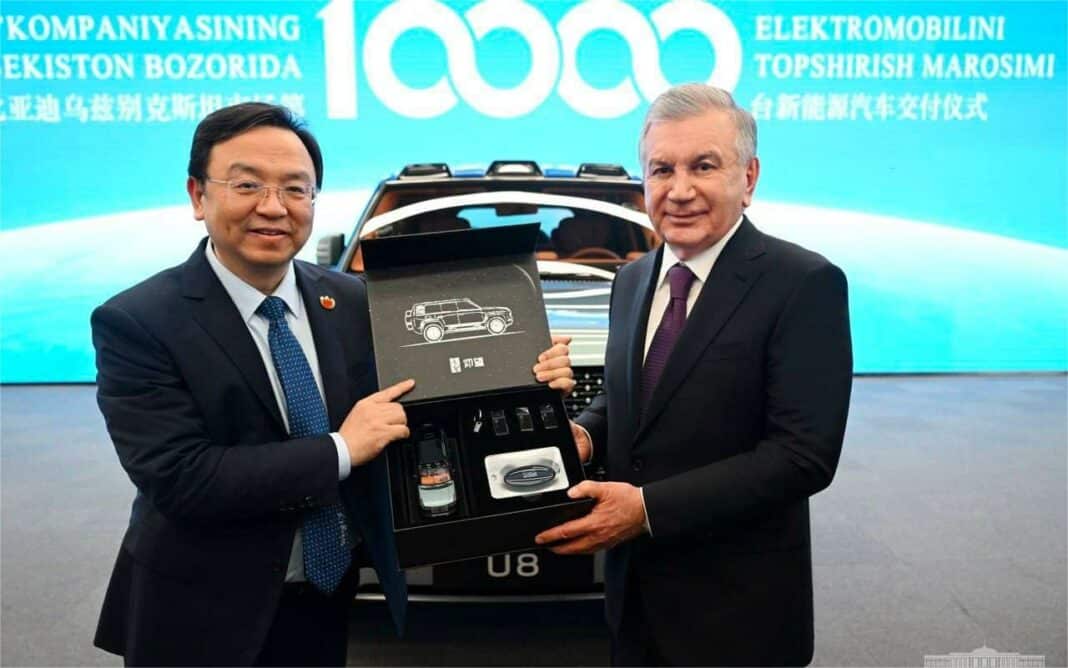
News like this to your inbox or phone?
Weekly summary to your inbox
I want this
Never miss and important news
Get Instant notification once the news is published.
Follow Us
On January 25th, the President of Uzbekistan, Shavkat Mirziyoyev, visited the BYD headquarters in Shenzhen, China. During this visit, Mirziyoyev and Wang Chuanfu, the President of BYD, conducted a remote production start-up ceremony for BYD’s new factory in Uzbekistan, marking the official production launch of the Song Plus DM-i, the first vehicle from this facility. Additionally, Wang presented the 10,000th new energy vehicle (NEV) sold by BYD in the Uzbekistan market – a Yangwang U8 – to President Mirziyoyev.
 The two parties held a production launch ceremony for the BYD Uzbekistan factory in Shenzhen, China
The two parties held a production launch ceremony for the BYD Uzbekistan factory in Shenzhen, ChinaDuring his visit, President Mirziyoyev witnessed a safety demonstration of BYD’s Blade Battery, gaining insight into the safety and technological aspects of BYD’s products. He also observed the Yangwang U8’s turn-in-place capability at the outdoor intelligent parking demonstration area. In discussions with Wang Chuanfu, Mirziyoyev expressed his hope for increased production capacity at the Uzbekistan facility and a deepening of cooperation between the two entities.




This visit coincides with Mirziyoyev’s state visit to China from January 23rd to 25th. His tour of the BYD headquarters was part of a broader engagement with Chinese enterprises. The Uzbekistan-China Investment Forum, held on January 25th in Shenzhen, brought together political and business representatives from both countries. The forum focused on enhancing bilateral economic and trade relations and expanding mutual investments, in line with the important consensus reached between the leaders of the two nations.
The agreement to produce electric and hybrid vehicles in Uzbekistan was signed in September last year between the Uzbekistan Ministry of Investment, Industry and Trade and BYD. As per the agreement, BYD and Uzavtosanoat JSC, a state-controlled automotive group in Uzbekistan, established a joint venture, “BYD Uzbekistan Factory,” to manufacture electric and hybrid vehicles.
BYD’s production layout in other countries
The expansion of BYD into Uzbekistan is part of the company’s broader global strategy. Earlier this month, BYD launched three pure electric models in Indonesia and announced a 1.3 billion USD investment in an automotive factory there, expecting a production capacity of 150,000 units.The Financial Times reported mid-month that BYD is constructing its first electric vehicle factory outside Asia in Brazil. Alexandre Baldy, BYD’s Director in South American countries, discussed a potential supply agreement, joint venture, or acquisition with Sigma Lithium, a Brazilian lithium producer worth 2.9 billion USD. Baldy highlighted BYD’s efforts to establish an integrated supply chain in Brazil, including active discussions with Sigma.
BYD’s global expansion includes new factories in Thailand, plans for an electric vehicle factory in Hungary, and ongoing negotiations to establish a facility in Mexico.
Users who are viewing this thread
Total: 1 (members: 0, guests: 1)
Pakistan Defence Latest
-
-
Durga Puja gift: Bangladesh interim government to export 3,000 tonnes of hilsa to Bengal (14 Viewers)
- Latest: Guynextdoor
-
-
Iran has requested the Pakistan Air Force to provide training for its fighter pilots! (6 Viewers)
- Latest: MastanKhan
-
Country Watch Latest
-
-
Rafale M Deal: India and France to Fast-Track Negotiations After Elections (7 Viewers)
- Latest: onlinpunit
-
-
-
